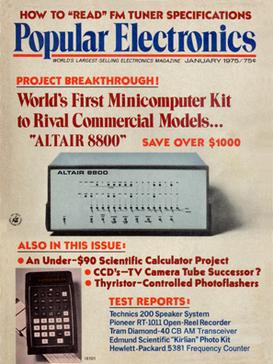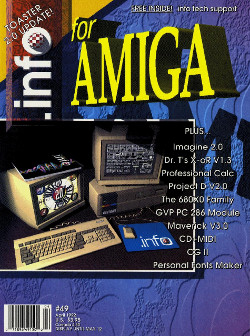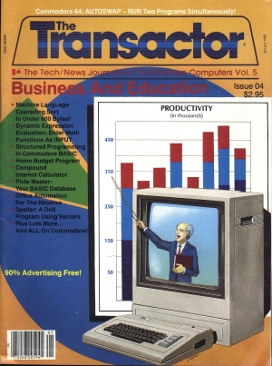Related Research Articles

The TRS-80 Micro Computer System is a desktop microcomputer launched in 1977 and sold by Tandy Corporation through their Radio Shack stores. The name is an abbreviation of Tandy Radio Shack, Z80 [microprocessor]. It is one of the earliest mass-produced and mass-marketed retail home computers.

Prodigy Communications Corporation was an online service from 1984 to 2001 that offered its subscribers access to a broad range of networked services. It was one of the major internet service providers of the 1990s.

Ziff Davis, Inc. is an American digital media and internet company. First founded in 1927 by William Bernard Ziff Sr. and Bernard George Davis, the company primarily owns technology- and health-oriented media websites, online shopping-related services, internet connectivity services, gaming and entertainment brands, and cybersecurity and martech tools. Previously the company was predominantly a publisher of hobbyist magazines.

Datamation is a computer magazine that was published in print form in the United States between 1957 and 1998, and has since continued publication on the web. Datamation was previously owned by QuinStreet and acquired by TechnologyAdvice in 2020. Datamation is published as an online magazine at Datamation.com.

Popular Electronics was an American magazine published by John August Media, LLC, and hosted at TechnicaCuriosa.com. The magazine was started by Ziff-Davis Publishing Company in October 1954 for electronics hobbyists and experimenters. It soon became the "World's Largest-Selling Electronics Magazine". In April 1957, Ziff-Davis reported an average net paid circulation of 240,151 copies. Popular Electronics was published until October 1982 when, in November 1982, Ziff-Davis launched a successor magazine, Computers & Electronics. During its last year of publication by Ziff-Davis, Popular Electronics reported an average monthly circulation of 409,344 copies. The title was sold to Gernsback Publications, and their Hands-On Electronics magazine was renamed to Popular Electronics in February 1989, and published until December 1999. The Popular Electronics trademark was then acquired by John August Media, who revived the magazine, the digital edition of which is hosted at TechnicaCuriosa.com, along with sister titles, Mechanix Illustrated and Popular Astronomy.

Crash, stylized as CRASH, is a magazine dedicated to the ZX Spectrum home computer, primarily focused on games. It was published from 1984 to 1991 by Newsfield Publications Ltd until their liquidation, and then until 1992 by Europress. It was relaunched as a quarterly A5 magazine in December 2020 with the backing of the original founders.
Newsfield Publications Ltd was a British magazine publisher during the 1980s and early 1990s.

The TRS-80 Model 100 is a portable computer introduced in April 1983. It is one of the first notebook-style computers, featuring a keyboard and liquid-crystal display, in a battery-powered package roughly the size and shape of a notepad or large book.
Minneapolis–Saint Paul, also known as the Twin Cities of Minneapolis and Saint Paul, in the state of Minnesota, United States of America, has two major general-interest newspapers. The region is currently ranked as the 15th largest television market in the United States. The market officially includes 59 counties of Minnesota and Wisconsin, and extends far to the north and west. The radio market in the Twin Cities is estimated to be slightly smaller, ranked 16th in the nation.

Micronet 800 was an information provider (IP) on Prestel, aimed at the 1980s personal computer market. It was an online magazine that gave subscribers computer related news, reviews, general subject articles and downloadable telesoftware.

Julian "Jaz" Rignall is a writer and editor. He has also produced content for corporate websites such as GamePro Media, publisher of GamePro magazine and GamePro.com, marketing collateral and advertising campaigns.

.info was a computer magazine covering Commodore 8-bit computers and later the Amiga. It was published from 1983 to 1992.

Computer Shopper was a monthly consumer computer magazine published by SX2 Media Labs. The magazine ceased print publication in April 2009. The website was closed and redirected to the PCMag website in late May 2018.

Home computers were a class of microcomputers that entered the market in 1977 and became common during the 1980s. They were marketed to consumers as affordable and accessible computers that, for the first time, were intended for the use of a single, non-technical user. These computers were a distinct market segment that typically cost much less than business, scientific, or engineering-oriented computers of the time, such as those running CP/M or the IBM PC, and were generally less powerful in terms of memory and expandability. However, a home computer often had better graphics and sound than contemporary business computers. Their most common uses were word processing, playing video games, and programming.

The Computer Paper was a monthly computer magazine that was published in Canada from February 1988 until November 2008. The magazine was originally published by Canada Computer Paper Inc. It was purchased in 1997 by Hebdo Mag International of Paris, France, and then to Piccolo Publishing Ltd of Toronto in 2003. Publication ceased in November 2008 due to declining ad revenues.

Byte was a microcomputer magazine, influential in the late 1970s and throughout the 1980s because of its wide-ranging editorial coverage.
Newsbytes News Network, called "an Associated Press for tech-information junkies" was founded in May, 1983 in San Francisco, California by broadcast journalist Wendy Woods Gorski, who remained editor in chief for the 19 years. Continually published from 1983 to 2002, Newsbytes covered breaking news in consumer technology including computing, interactive media, telecommunications and cybersecurity, spanning the formative years of Silicon Valley and the advent of personal computers.
Started in 1983, Boston CitiNet was a local online service developed by Applied Videotex Systems, Inc. of Belmont, Massachusetts. The service allowed modem-equipped personal computer users to dial-in and access a range of information and messaging services including chat, forums, email and a variety of content. There were several other companies offering paid/subscription services as the time like The Source, CompuServe and Boston-based Delphi. Boston Citinet was unique since it was free to access and was supported by advertising. Messaging services such as email and chat required registration and a monthly fee of $9.95 - an early example of the now popular freemium business model.

The Transactor was a computer magazine directed at users of Commodore home computers.
References
- ↑ "Computer User Magazine". Vintage-computer. August 7, 2007. Retrieved October 8, 2010.
- ↑ "COMPUTERUSER IS BIG WINNER.(the Minnesota Magazine & Publications Association's annual Publishing Excellence Awards)(Industry Trend or Event)(Brief Article) - Computer User | HighBeam Research". Highbeam. Archived from the original on October 22, 2012. Retrieved October 8, 2010.
- ↑ "Awards". Computer user. Retrieved October 8, 2010.
- ↑ Reilly, Mark (September 30, 2002). "SoniqCast launching high-powered PDA and MP3 player - Minneapolis / St. Paul Business Journal". Bizjournals.com. Retrieved October 8, 2010.
- ↑ "About Us". Computer user. Retrieved October 8, 2010.